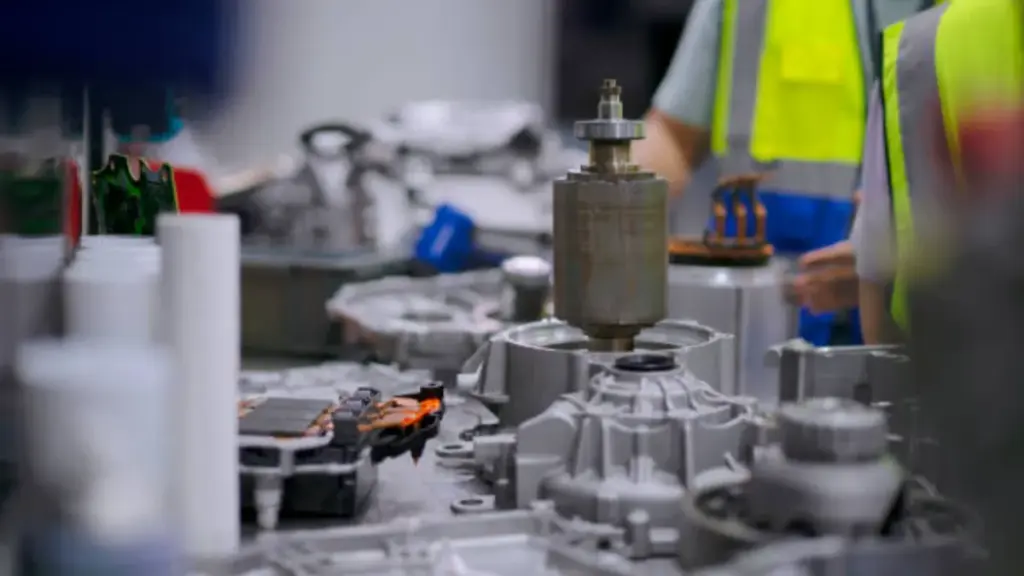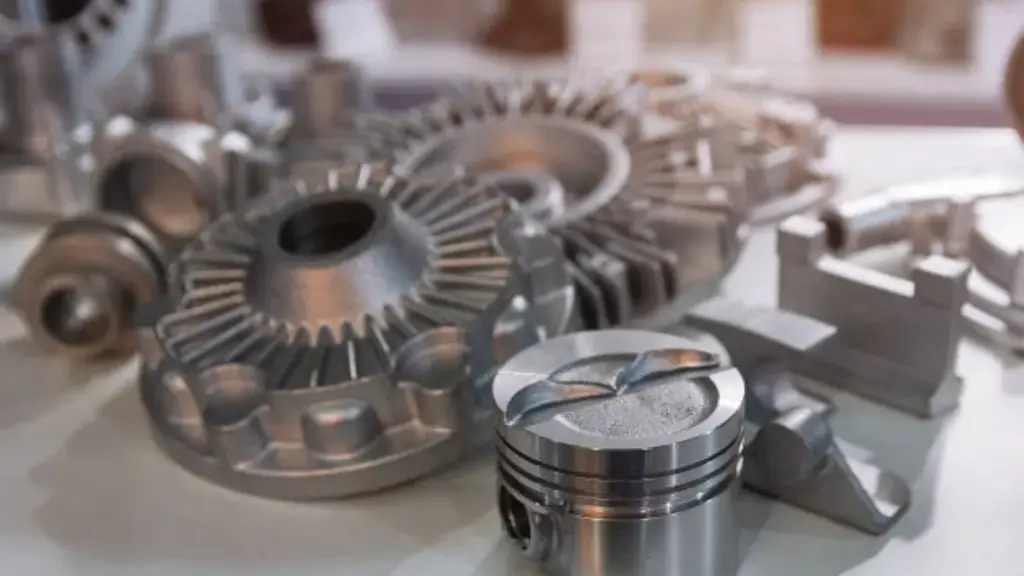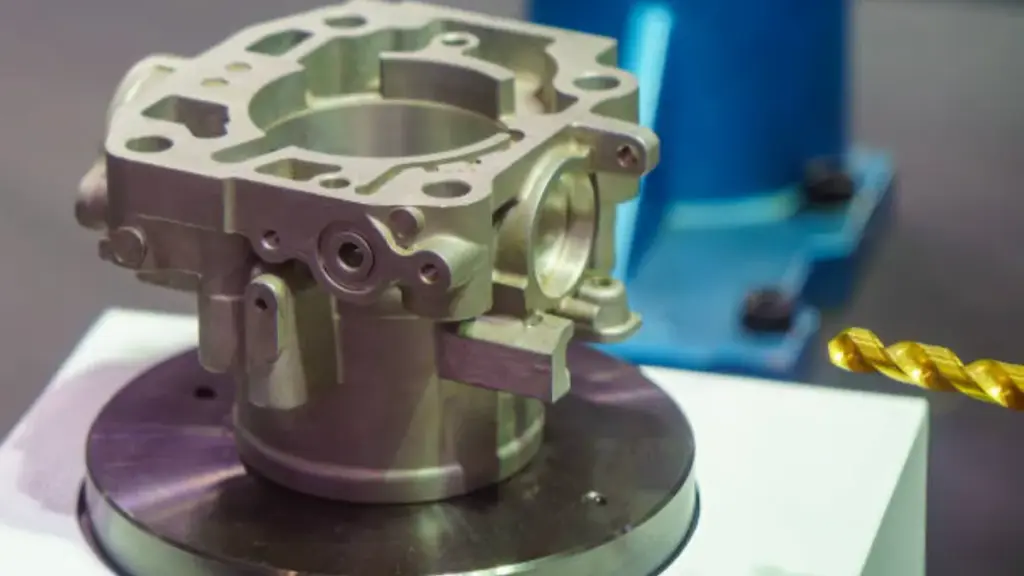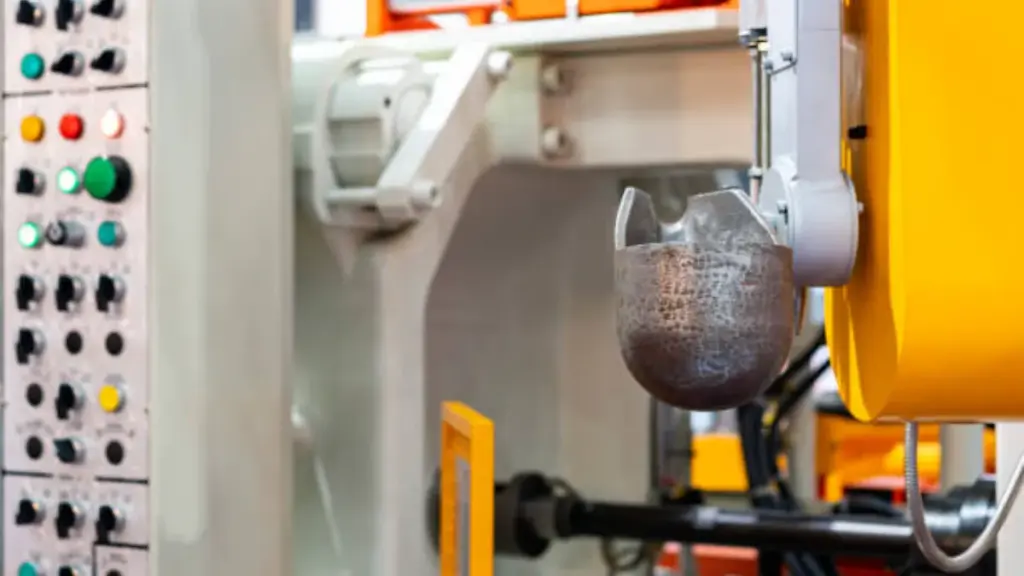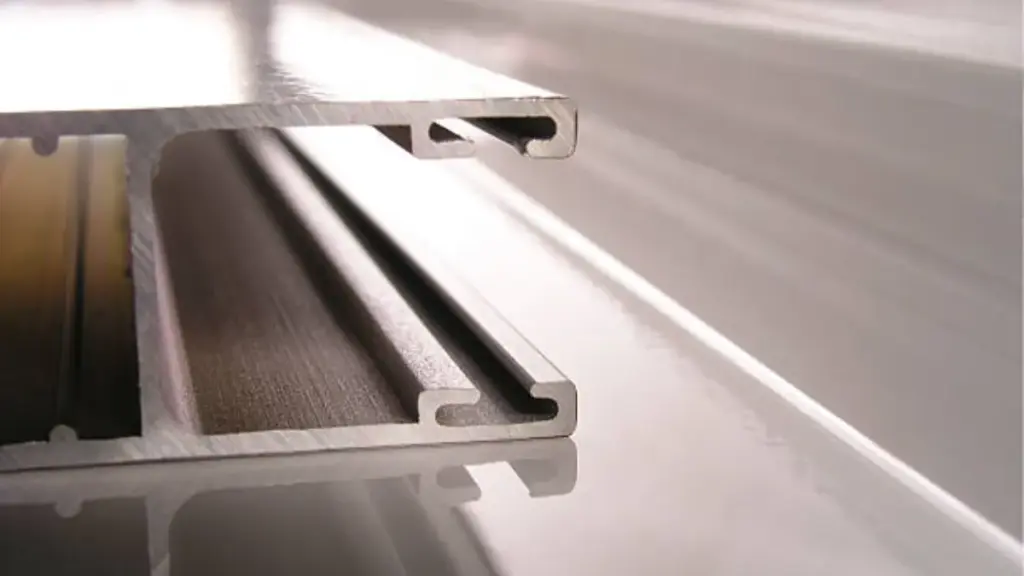Литье под давлением – это увлекательный процесс, который играет решающую роль в современном производстве.. Это как основа отрасли, тихо проверяя, чтобы все, от автомобильных запчастей до электроники, было в порядке. Вы когда-нибудь задумывались, как им удается так быстро создавать столько сложных деталей?? Хорошо, литье под давлением – секретный соус. Давайте углубимся в суть этой техники и взвесим преимущества и недостатки литья под давлением..
Что такое литье под давлением?

Литье под давлением — это производственный процесс, который включает в себя нагнетание расплавленного металла в полость формы под высоким давлением.. Думайте об этом как о впрыскивании горячего жидкого металла в формочку для печенья, но для промышленных деталей.. Этот метод известен тем, что позволяет создавать сложные формы с поразительной точностью..
Виды литья под давлением
Литье под давлением имеет два основных варианта.: горячая камера и холодная камера. Литье под давлением в горячей камере, металл плавится в камере, соединенной с формой. Он быстрый и идеально подходит для металлов с низкой температурой плавления, таких как цинк.. Литье под давлением с холодной камерой, с другой стороны, предполагает плавку металла отдельно перед передачей его в камеру.. Это ваш выбор для металлов, таких как алюминий, которые имеют более высокие температуры плавления..
Преимущества литья под давлением
Литье под давлением не просто так популярно. Он обладает множеством преимуществ, которые делают его популярным методом в различных отраслях..
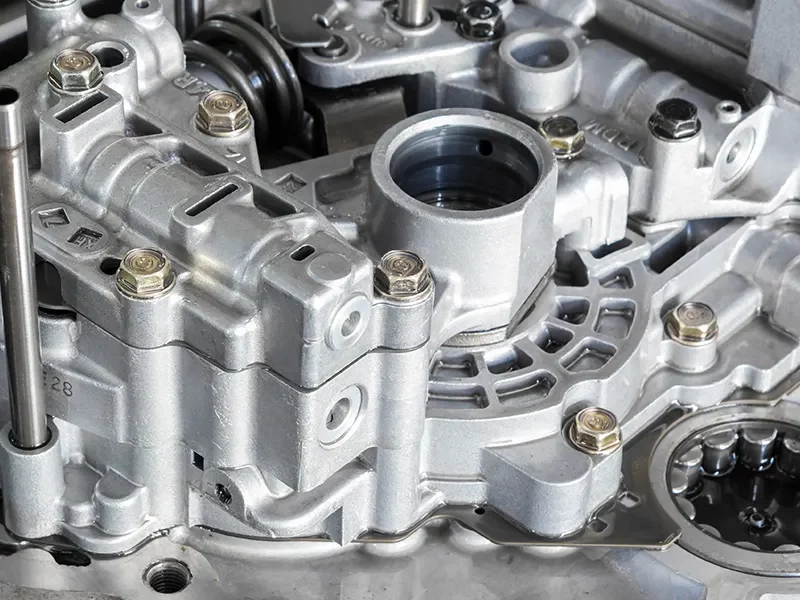
Высокая эффективность и производительность
Одно из самых больших преимуществ литье под давлением насколько это быстро и эффективно. Производственные циклы быстрые, проворачивание деталей с впечатляющей скоростью. Плюс, с правильной настройкой, вы можете автоматизировать большую часть процесса, это означает, что вы получаете стабильные результаты без тонны ручного труда.
Превосходное качество и точность
Литье под давлением похоже на мастера точного производства.. С его помощью можно добиться жестких допусков и сложных деталей, которые было бы сложно воспроизвести другими методами.. Точность размеров на высшем уровне, и вы получите гладкую поверхность прямо из формы, сокращение необходимости постобработки.
Универсальность в дизайне
Имею в виду сложную конструкцию? Литье под давлением, вероятно, справится с этим.. Этот процесс превосходно подходит для создания деталей сложной геометрии и тонких стенок.. Это похоже на волшебную палочку, которая превращает ваши подробные чертежи в реальность, даже не вспотев..
Экономия материалов и сокращение отходов
В мире литья под давлением, не тратить зря, не хочу. Процесс эффективен с материалами, производство минимального количества отходов. И любой образующийся лом зачастую может быть переработан., что делает его более экологичным вариантом по сравнению с некоторыми другими методами производства..
Недостатки литья под давлением
Конечно, ни один метод не идеален, и литье под давлением имеет свои недостатки, которые необходимо учитывать..
Высокая первоначальная стоимость
Подготовка к литью под давлением может быть дорогостоящей. Штампы и оборудование стоят недешево., и вам нужно будет производить значительное количество деталей, чтобы сделать это экономически выгодным. Столь высокие первоначальные инвестиции могут стать барьером для мелкомасштабных операций..
Материальные ограничения
Хотя литье под давлением является универсальным, это не универсальное решение. Вы несколько ограничены металлами, которые можете использовать.. В целом, лучше всего подходит для цветных металлов, таких как алюминий, цинк, и магний. Если вам нужны детали из стали или железа, вам придется поискать в другом месте.
Сложность и обслуживание
Сложная природа литья под давлением означает, что инструменты и матрицы могут со временем изнашиваться., требующие регулярного обслуживания. Такое обслуживание имеет решающее значение для поддержания точности и качества деталей., но это может увеличить общую стоимость и сложность операции..
Ограничения по размеру
Литье под давлением отлично подходит для изготовления деталей малого и среднего размера., но он не идеален для более крупных компонентов. Размер и вес деталей, которые вы можете изготовить, ограничены производительностью машины для литья под давлением и форм..
Применение литья под давлением
Учитывая множество преимуществ, неудивительно, что литье под давлением находит применение во многих отраслях промышленности..
Автомобильная промышленность
Литье под давлением – это рабочая лошадка в автомобильный сектор, производство всего: от блоков двигателей до картеров трансмиссии. Его способность создавать долговечные, Легкие детали делают его неоценимым для повышения топливной экономичности и производительности..
Бытовая электроника
Вы когда-нибудь задумывались, как ваши гаджеты остаются такими гладкими и компактными?? Литье под давлением играет здесь ключевую роль., создание легких и прочных компонентов, идеально подходит для новейших смартфонов, ноутбуки, и другие электронные устройства.
Аэрокосмическая и оборонная промышленность
В отраслях, где точность и надежность имеют первостепенное значение, литье под давлением блестит. Он используется для производства компонентов, способных выдерживать экстремальные условия., что делает его идеальным для аэрокосмической и оборонной промышленности..
Бытовая техника
От кухонных гаджетов до электроинструментов, литье под давлением остается за кадром, обеспечение прочности и надежности этих продуктов. Возможность производить детали сложной формы означает, что конструкторы имеют свободу вводить инновации, не сдерживаясь производственными ограничениями..
Литье под давлением против. Другие методы литья
При выборе метода литья, Очень важно понимать различия между литьем под давлением и другими распространенными методами.. Каждый метод имеет свои сильные и слабые стороны, делая их пригодными для различных применений.
Литье под давлением против. Литье в песок
Литье в песок, одна из старейших техник литья, создает формы из песка и сравнивается с литьем под давлением следующим образом:
- Литье под давлением обеспечивает превосходную точность размеров и более гладкую поверхность., в то время как литье в песчаные формы часто требует дополнительной механической обработки.
- Литье под давлением происходит быстрее благодаря впрыску под высоким давлением., в отличие от более медленного процесса песчаной формы.
- Литье в песчаные формы позволяет обрабатывать более широкий спектр металлов., в том числе ферросплавы, тогда как литье под давлением ограничивается цветными металлами, такими как алюминий., цинк, и магний.
- Хотя литье под давлением требует более высоких затрат на первоначальную настройку., становится более рентабельным при больших объемах производства, в то время как литье в песчаные формы лучше подходит для небольших партий или более крупных компонентов из-за меньших первоначальных инвестиций..
Литье под давлением против. Кастинг по выплавляемым моделям
Литье по выплавляемым моделям, или литье по выплавляемым моделям, создает слепок из восковой модели, покрытой керамикой. По сравнению с литьем под давлением:
- Литье по выплавляемым моделям позволяет добиться более мелких деталей и более сложных конструкций., что делает его идеальным для сложной геометрии.
- Литье под давлением обычно обеспечивает более гладкую поверхность., в то время как литье по выплавляемым моделям часто требует дополнительной отделки.
- Литье под давлением более эффективно для крупносерийного производства с коротким временем цикла., тогда как литье по выплавляемым моделям происходит медленнее и лучше для малых и средних объемов.
- Литье по выплавляемым моделям более универсально и позволяет использовать более широкий диапазон металлов., включая тугоплавкие сплавы, такие как нержавеющая сталь, в то время как литье под давлением ограничено цветными металлами.
Как выбрать производителя литья под давлением
Выбор правильное производство литья под давлениемr имеет решающее значение для обеспечения качества и эффективности вашего производства. Вот некоторые ключевые факторы и вопросы, которые помогут вам принять решение..
- Опыт и экспертиза: Ищите производителей с проверенной репутацией в области литья под давлением., особенно с опытом производства деталей, подобных вашим. Их опыт может существенно повлиять на качество и надежность конечного продукта..
- Возможности и технологии: Оценить производственные возможности производителя, включая типы металлов, которые они могут отливать, размер и сложность деталей, с которыми они могут справиться, и технологии, которые они используют. Современный, ухоженное оборудование и передовые технологии могут повысить эффективность и качество.
- Гарантия качества: Убедитесь, что у производителя внедрены надежные процессы контроля качества.. Сертификаты, такие как ISO 9001 может указывать на стремление поддерживать высокие стандарты. Спросите об их методах проверки и о том, как они справляются с дефектами и несоответствиями..
- Сроки выполнения заказов и гибкость: Учитывайте сроки выполнения заказов производителем и его способность приспосабливаться к изменениям в производственных графиках.. Надежный производитель должен быть в состоянии уложиться в ваши сроки и адаптироваться к вашим потребностям без ущерба для качества..
- Стоимость и ценность: Хотя стоимость является важным фактором, важно сбалансировать это с предлагаемой ценностью. Оцените общий пакет, включая качество, услуга, и поддержка, а не просто цена за единицу.
Заключение
Литье под давлением является движущей силой в производственном мире., предлагая уникальное сочетание эффективности, точность, и универсальность. Хотя это сопряжено с некоторыми проблемами, преимущества часто перевешивают недостатки, особенно в сценариях крупносерийного производства. По мере развития технологий, будущее литья под давлением выглядит ярче, чем когда-либо, обещая еще больше инноваций и улучшений.
Часто задаваемые вопросы по литью под давлением
1. Каков срок службы формы для литья под давлением?
Срок службы формы для литья под давлением может значительно варьироваться в зависимости от таких факторов, как тип отливаемого металла и сложность формы.. В целом, пресс-формы могут прослужить от десятков тысяч до сотен тысяч циклов..
2. Можно ли использовать литье под давлением для небольших тиражей??
Хотя литье под давлением, как правило, более рентабельно при больших объемах производства из-за высоких первоначальных затрат., его можно использовать для небольших тиражей, если детали особенно сложны или существуют другие оправдывающие факторы.
3. Чем литье под давлением отличается от других методов литья?
Литье под давлением обеспечивает превосходную точность, более быстрые сроки производства, и лучшее качество поверхности по сравнению со многими другими методами литья. Однако, он также требует более высоких первоначальных инвестиций и менее гибок с точки зрения металлов, которые можно использовать..
4. Каковы распространенные дефекты при литье под давлением?
Распространенные дефекты включают пористость., которые представляют собой небольшие пустоты в отлитой детали, ошибки, когда металл не полностью заполняет форму, и дефекты поверхности. Надлежащий контроль процесса и техническое обслуживание могут свести к минимуму эти проблемы..
5. Как правильно выбрать металл для литья под давлением??
Выбор металла зависит от требований применения.. Алюминий легкий и прочный, цинк обеспечивает высокую точность и простоту литья, а магний легкий и его легко обрабатывать. Каждый металл имеет свой набор свойств, которые делают его пригодным для различных целей..

